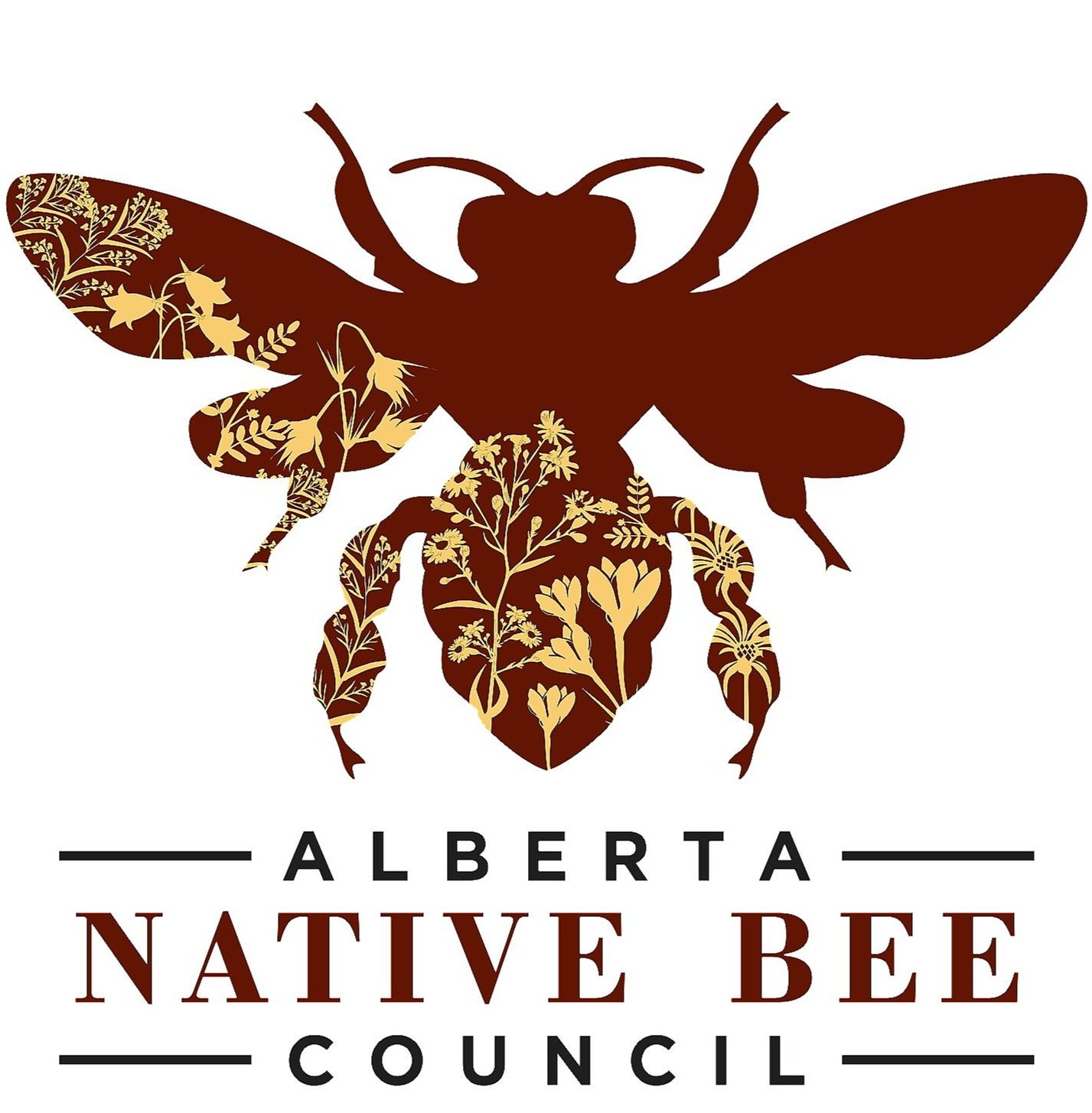
Solitary Bee Habitat and Bee Hotels
Native Plant Resources & Solitary Bee Habitat
Like us, bees need food and a place to live and it’s easy to provide these critical resources in your yard. We recommend incorporating native flowering plants into your landscaping (for a list of species see our Bee friendly gardens: Native plants for Alberta pollinators brochure (Coming soon!)) but many non-native, ornamental plant species can benefit bees as well. Some key considerations for planting flowers for bees include planting a variety of flower species that have different bloom periods so that plants are flowering all season long, include flowers of different shapes, sizes and colours to accommodate our native bees, which also come in different shapes, sizes and colours, and plant clumps of a single species together to make it more efficient for foraging bees.
Plants can also be an important source of nesting materials for native bees. Some of our native bees are called stem nesters because they lay eggs in hollow or pithy plant stems. Those eggs usually develop into adults and emerge in the following year. Incorporating plant species that have hollow or pithy stems with inside diameters between 1 and 10 mm can provide important habitat for these bees. It’s also important to minimize fall or spring clean-up, you don’t want to discard hollow stems that have bees nesting inside. Allow hollow stems to decompose in your garden bed naturally or inspect stems for signs of nesting bees and discard only those with no signs of bees. For a list of native plant species that have hollow stems suitable for stem nesting bees see our Bee friendly gardens: native plants for Alberta pollinators brochure.
For some bees, the lack of plants can be important also! In fact, most of our native bees are ground nesting bees. These bees need access to bare soil (preferably sandy textured soil) so that they can excavate soil, creating tunnels and nest cells where they lay eggs and leave behind food for their offspring, most of these eggs will emerge as adults in the following year! Leaving small patches of bare soil can be beneficial for these bees.
Bumble bees will nest in cavities that are protected from the elements and predators. In the wild, they will nest in abandoned rodent holes, tree cavities, under bunches of grass or under a wood or branch pile. Bumble bees will sometimes use man made bumble bee boxes. For details on how to build a bumble bee box and for information on how to participate in our bumble bee box monitoring program visit this page.
Some of our native bees have special jaws (or mandibles) that they can use to excavate decomposing wood. Incorporating old logs and stumps can provide nesting resources for these bees and add intrigue into your garden bed.
Come back soon for added content about: Plant species that leaf cutters will use to build nest cells, and information about clay soil for mason bees.
Bee Hotels
Bee hotels (also known as bee condos or solitary bee nesting boxes) are structures built for the purpose of providing nesting habitat for stem-nesting bees. The popularity of bee hotels has skyrocketed in recent years, and a variety of designs are now being distributed on the internet and at local supermarkets, craft fairs, and greenhouses. This increase in popularity is exciting, as it suggests that increasing numbers of people are becoming aware of, and perhaps even concerned about, the lives and habitat needs of bees. However, we are also concerned about this trend for three reasons. First, many of the designs being distributed do not meet the minimum habitat requirements of tunnel-nesting bees, and therefore do not support bee conservation. Second, we are concerned that many of the bee hotels being built are not being maintained properly, and therefore may be facilitating the spread of pests and diseases among native bee populations. Third, research has so far been unable to determine whether bee hotels actually increase native bee populations or diversity, even when ideal designs are used and maintained properly!
Based on these concerns and our current state of knowledge, we recommend the following: If native bee conservation is your primary goal, ignore the bee hotel hype. Instead, focus on planting flowers (see our Bee friendly gardens: Native plants for Alberta pollinators (Coming soon!)) and incorporating diversity into your landscaping so that bees can make their nests in natural materials such as rotting logs or the hollow stems of plants.
That being said, we don’t want to entirely dismiss bee hotels, as they are definitely an incredible educational tool. If best design and maintenance practices are followed, they are unlikely to cause harm to native bee populations. If you are looking to purchase or build a bee hotel, keep the following best practices in mind:
Keep your bee hotel small to minimize disease transfer
Ensure tunnels are at least 6” deep and closed off on the back to prevent predators from sneaking in.
Ensure tunnel diameter is between 1 and 10 mm to facilitate the needs for the variety of native bees that nest in these tunnels.
Ensure tunnels are greater than 1 mm thick.
Ensure tunnels are made from a natural material that is breathable
If possible, space tunnels 3/4” apart especially for hotels that have a flat entrance. This helps the females to quickly find the right tunnel.
Select a design that is easy to clean and discard tubes after they have been used. Hotels with tunnels that can be opened to remove bee cocoons to be thoroughly disinfected are ideal. If you have removed cocoons place them in a separate container and place in an unheated garage or outside in a protected area and leave them to emerge in the following year.
For more information about solitary bee hotels, view our guide to best practises:
